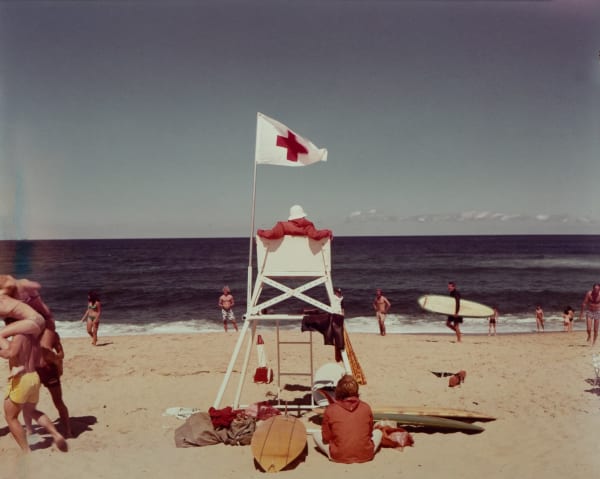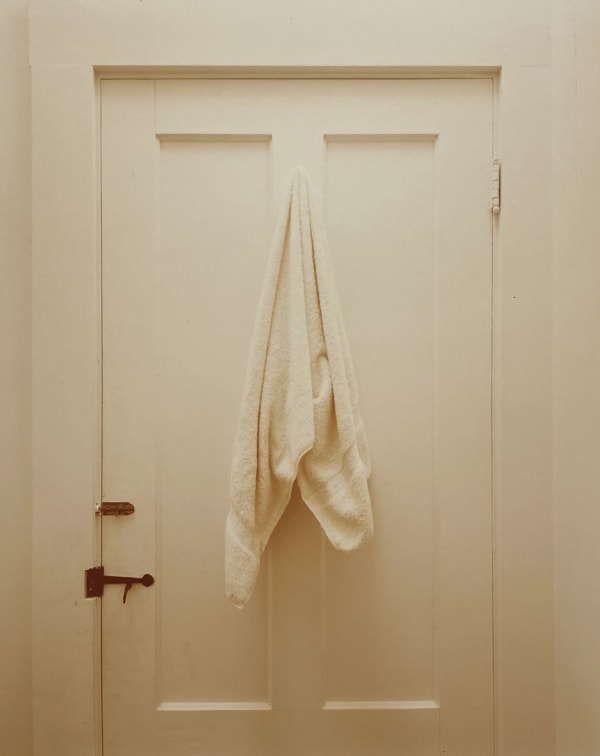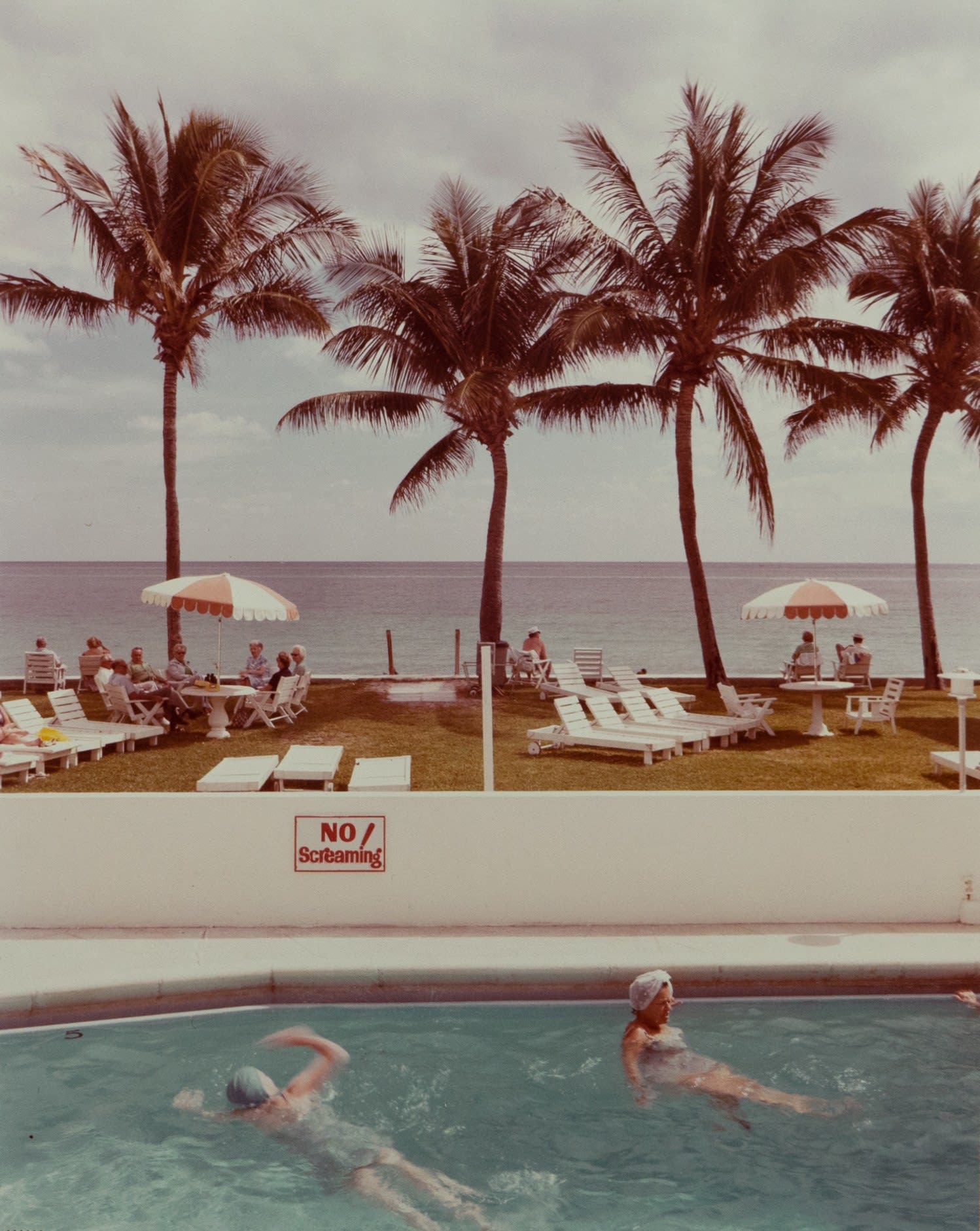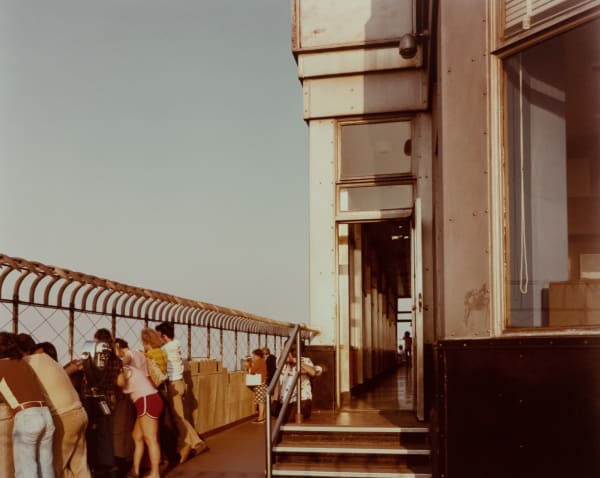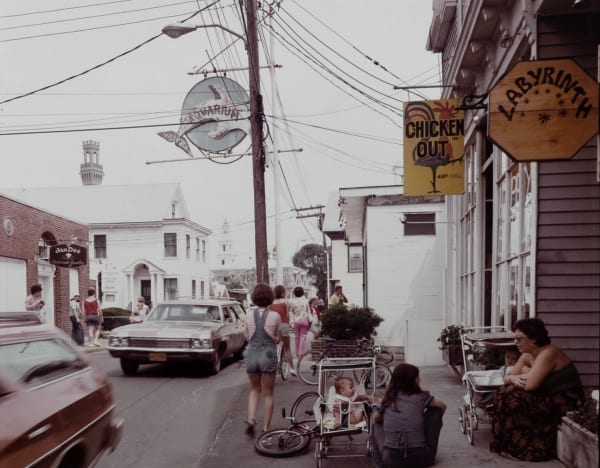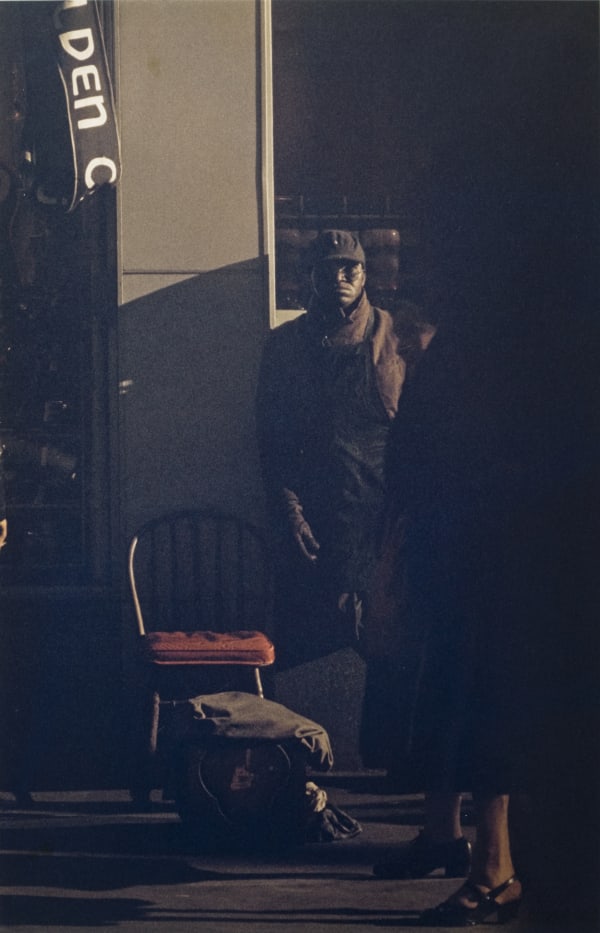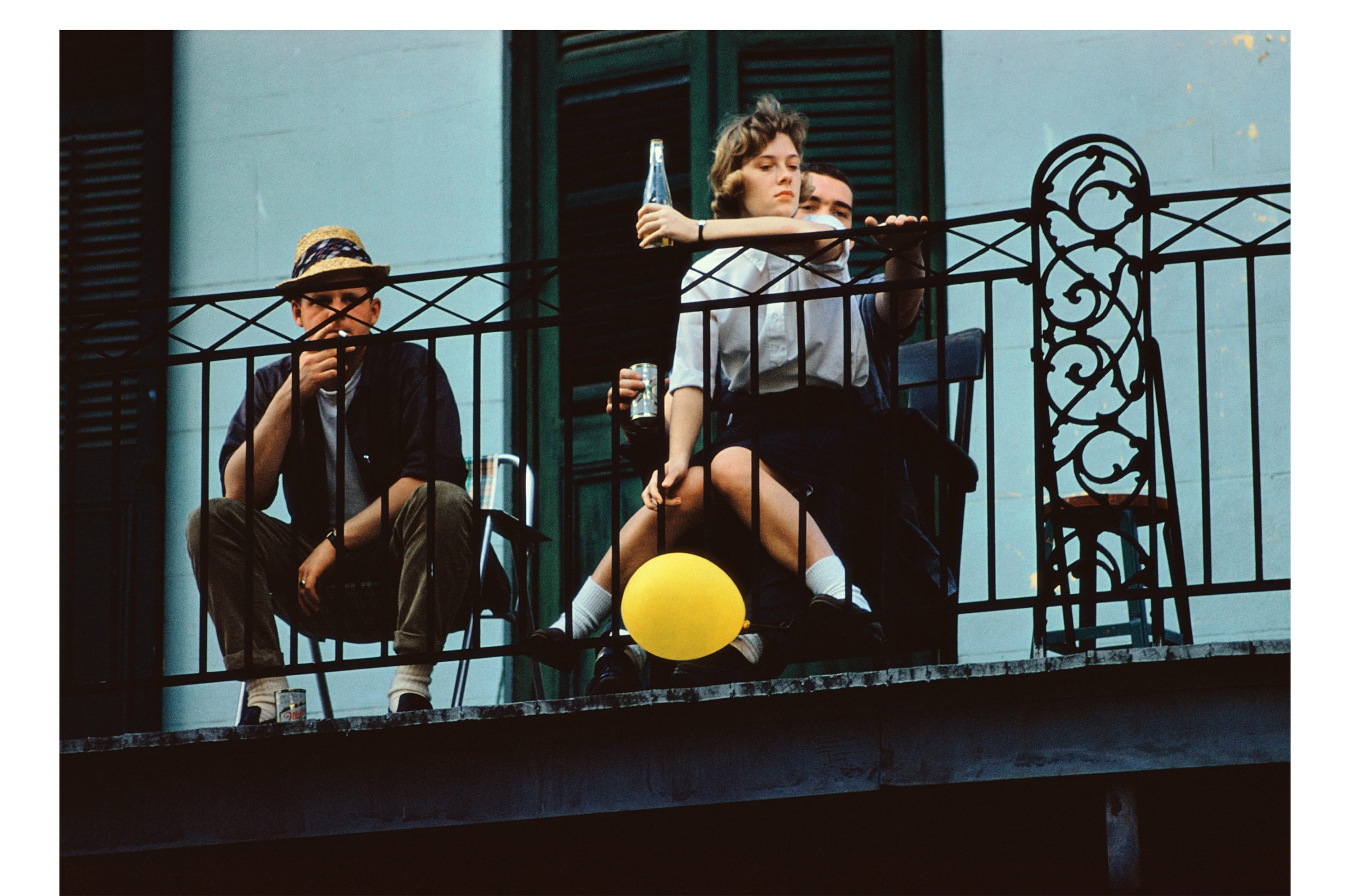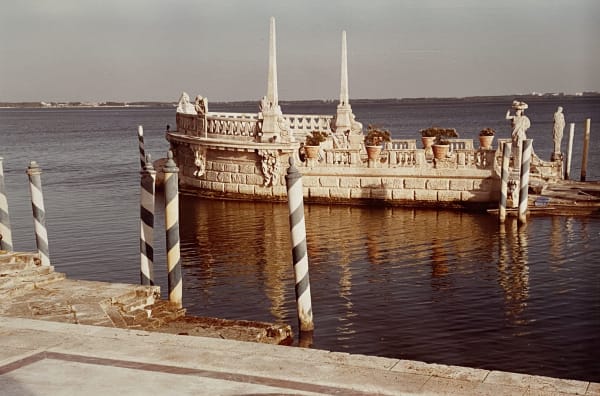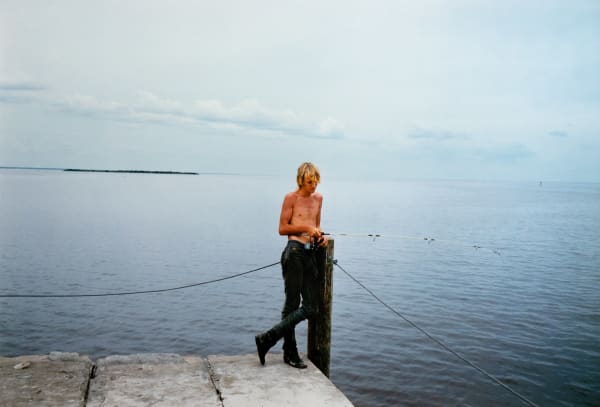-
" There was a time when color photography wasn't taken seriously. In the 1960s and 1970s, it was considered amateurish, good for holiday snaps and advertisememnts at best. It had no place in the art world, where black-and-white prevailed. The work of a few rebels was INSTRUMENTAL in changing this attitude." - Jacopo Prisco, CNN
-
JOEL MEYEROWITZ
"By the early 70’s color technology had advanced to the point where one could make prints in the darkroom without the difficulties and expense experienced in the 60’s. It was then that I committed myself entirely to working in color. My reasoning was; if we accept the idea that a photograph basically just describes things, then a color photograph describes more things, that there is more content in color and I wanted to see what those kinds of photographs might look like. At the same time I was beginning to feel that there was more to photography than making good “catches” of life on the streets, and that the contrapuntal tactics of Cartier-Bresson, and the well timed, and gesture centered images of my own and my peers was something I had to give up. Because of using color my efforts on the street moved away from the “caught” moment toward a more dispersed observation, toward a non-hierarchical image in which everything played an equal role; the people on the street, the architecture, the quality of the day, the angle of the light, the weight of the shadows, the simultaneity of minor events. This overall-ness I called, “field photographs.” I meant them to be about the “experience” of being on the street, in that specific city, on that day, in that precise season and year, so that viewers might experience for themselves what it felt like in that moment."- Joel Meyerowitz
-

Joel Meyerowitz
Roseville Cottages, Truro, Massachusetts, 1976Signed, titled, and dated with annotations in ink versoChromogenic dye coupler print. VintageImage: 7 5/8 x 9 9/16 inches
Paper: 11 x 14 inches -
-

Joel Meyerowitz
Fort Lauderdale, Florida, 1977Signed, titled, dated with annotations in ink versoChromogenic dye coupler print. VintageImage: 9 5/8 x 7 5/8 inchesPaper: 14 x 11 inches -
SAUL LEITER
Saul Leiter was a master at abstracting the ordinary. His color photographs have distinct qualities making them stand apart from other photographers using color at the time. He started out as a painter, influenced by color and shapes. Leiter was introduced to photography by the Expressionist painter, Richard Pousette-Dart, and started to experiment with color photography at a time when the medium was in its early stages. Leiter often used a telephoto lens which was not a focal length that many street photographers utilized, but he used it to create a compressed view that made his work feel painterly. He used other techniques to achieve this painterly look including shooting through rain and snow, photographing through windows, bringing out strong colors in out-of-focus foreground elements, and shooting with expired color film. His use of a shallow depth of field was a way for Leiter’s background in expressionism could shine through in his photographs.
-
ERNST HAAS
Ernst Haas (1921–1986) played a significant role in elevating color photography from its commercial and documentary origins to an expressive and artistic medium. He began experimenting with Kodachrome color film in the early 1950s when black and white photography was still dominant. Haas was one of the first photographers to gain recognition for his work in color. In 1953 LIFE magazine published his groundbreaking 24-page color photo essay on New York City. This was the first time such a large color photography feature was published by LIFE. In 1962 a retrospective of his work was the first color photography exhibition held at New York’s Museum of Modern Art. Haas continued to explore various subjects and genres throughout his career, from landscapes to street photography and abstract compositions. He believed that photography was a medium of constant discovery and innovation. Haas was not afraid to experiment with techniques and push the boundaries of color photography, often using multiple exposures, long exposures, and unconventional angles to create visually striking images. Ernst Haas' contributions to the medium of color photography paved the way for its acceptance as a legitimate form of fine art.
-

Ernst Haas
Yellow Balloon, New Orleans, 1960Signed, titled, dated, and editioned with copyright credit by Alexander Haas, the artist's son, in ink verso.11 x 14 inch chromogenic dye coupler print16 x 20 inch chromogenic dye coupler printEdition of 2520 x 30 inch chromogenic dye coupler printEdition of 30 -
WILLIAM EGGLESTON
William Eggleston began his career making black-and-white photographs. His exploration of color photography started in 1965, when he met photographer, William Christenberry. In 1973 and 1974, Eggleston was a teacher at Harvard University. It was during these years that he discovered dye-transfer printing. Dye-transfer printing was originally used for magazine and advertising copy. The dyes used in the printing process are very pure compared to normal coupler-induced photographic dyes. This vibrant process resulted in some of Eggleston’s most famous photographs such as his 1973 photograph titled, The Red Ceiling. Eggleston’s first solo exhibition titled, Photographs, opened at the Museum of Modern Art in New York City in 1976 with the support of John Szarkowski, the influential photography curator. The ground-breaking exhibition was comprised of dye-transfer prints that he created between 1969 and 1971. It was regarded as one of the most important and controversial photography shows of its time. The exhibitions catalog,William Eggleston’s Guide, was the museum’s first publication of color photographs and alongside the exhibition represented a turning point in the history of photography where color photography was elevated to a respected medium of artistic expression.
-

William Eggleston
Dandridge, TennesseeSigned and editioned with annotations in ink versoChromogenic dye coupler printImage: 19 9/16 x 12 7/8 inchesPaper: 20 x 16 inchesEdition 3 of 3 -

William Eggleston
Untitled (Downtown Morton, Mississippi), 1970Signed in ink recto; numbered '13/15' and 'EAT# 0811.013,' stamped photographer's signature, Eggleston Artistic Trust copyright credit reproduction limitation, and printing information on stamp with annotations in pencil versoDye transfer print. Printed 2008Image: 17 1/2 x 26 7/8 inchesPaper: 20 1/2 x 29 7/8 inchesEdition 13 of 15 -
“The way I have always looked at it is the world is in color. And there’s nothing we can do about that. Composition is important, but so are many other things, from content to the way colors work with or against each other.”
- William Eggleston
-

William Eggleston
Untitled from Portfolio 10.D.70.V1 (food on shelves), 1970Signed in ink recto; signed by William J. Eggleston, III, Managing Trustee of the Eggleston Artistic Trust, titled, dated, and editioned with annotations in pencil on artist and copyright stamp versoDye transfer print. Printed 1996Image: 12 15/16 x 18 inchesPaper: 15 3/8 x 19 1/4 inchesEdition of 15 -
WILLIAM CHRISTENBERRY
William Christenberry was an artist renowned for his evocative and poignant depictions of the American South, particularly in his use of color photography. Christenberry began working with color in the late 1960s, a time when the medium was still primarily associated with commercial and snapshot photography rather than fine art. His decision to employ color was a deliberate choice, as he believed it added an additional layer of richness and emotional resonance to his subjects. It allowed him to capture the essence of the landscapes, architecture, and cultural artifacts of the South with a heightened sense of realism and vibrancy. One of the key aspects of Christenberry’s work was his attention to the play of light and shadow. He often photographed his subjects in the warm, golden glow of dusk or in the stark, high-contrast light of midday. This deliberate use of light enhanced the textures and details in his images. Another significant element of Christenberry’s work was his exploration of the passage of time and the concept of memory. He frequently revisited the same locations and subjects over the years, documenting their transformation and decay. By photographing in color, he was able to convey a sense of nostalgia, capturing the faded hues of weathered buildings, the changing seasons, and the progressions of time itself.
-
MITCH EPSTEIN
Mitch Epstein’s use of color in his photographs is characterized by its subtlety, nuance, and rich tonal range. He carefully composes his images, paying close attention to the interplay of colors within the frame. Rather than using vibrant or saturated hues, Epstein often gravitates towards muted or earthy tones, which lend his photographs a quiet, contemplative quality. This choice allows him to evoke a sense of introspection and draws viewers into his carefully crafted visual narratives. Epstein captures the complex relationship between people and their surroundings, often highlighting the consequences of industrialization, urbanization, and the intersection of nature and culture. His work subtly conveys the tension between the beauty and fragility of the natural world and encroachment of human activity.
-

Mitch Epstein
Glacier National Park, Montana, 1968Signed, titled, dated, and editioned verso20 x 24 inch chromogenic dye coupler printEdition of 10 -
HARRY CALLAHAN
Harry Callahan began photographing and experimenting in color from the very beginning of his career in the 1940s. In 1977, after a major retrospective of his black-and-white work at the Museum of Modern Art, Callahan began exclusively working in color. This shift was inspired by a feeling and need for a new challenge. He felt he had solved most of the visual problems that interested him in the monochromatic medium that he had become so recognized for. Many of the thematic elements of his black-in-white work crossed over to his color work. His color work explores chromatic concerns but also continues his interest in the city, patterns, isolated figures lost in thought (often female), simple compositions, and contrast between light and shadow.
-

Harry Callahan
Providence, 1984Signed in pencil recto; annotations in pencil versoDye transfer printImage: 9 9/16 x 14 7/16 inchesPaper: 17 1/4 x 21 9/16 inches


